Understanding Medicaid Waiver Programs and How Families Can Access Support
Medicaid waiver programs are vital tools that enable families of individuals with disabilities, chronic health conditions, or the elderly to access community-based services instead of institutional care. These programs are designed to foster independence, provide tailored support, and promote community living, all while helping to manage healthcare costs. Navigating these complex systems can be challenging for families, but understanding the different options, eligibility criteria, application processes, and available resources is essential for advocacy and successful access. This article offers comprehensive insights into Medicaid waivers, exploring their types, eligibility requirements, application procedures, and support networks to empower families in their advocacy efforts.
Overview of Medicaid Waivers and Eligibility Criteria
What are Medicaid waiver programs and who is eligible for them?
Medicaid waiver programs are specialized services provided through state Medicaid plans, designed to offer long-term care and support in community settings instead of institutional environments like nursing homes or hospitals. These programs are tailored to meet the unique needs of individuals with disabilities, chronic health conditions, or elderly individuals who wish to live independently.
Eligibility for these waivers hinges on several criteria. First, applicants must qualify for Medicaid based on income and assets, which vary slightly by state but generally adhere to federal guidelines. Additionally, individuals must meet medical criteria that often include a Level of Care assessment, indicating a need for a certain level of personal or health-related support. For example, many waivers require that applicants need services comparable to those provided in a nursing facility.
These programs serve a broad range of populations, including older adults over 65, people with developmental or physical disabilities, and children with special health needs. They also vary by state; some Waivers focus specifically on developmental disabilities, while others target aging populations or individuals with traumatic brain injuries.
The services offered cover a wide spectrum, from basic personal care and home health assistance to home modifications, behavioral support, employment services, and assistive technology. Many of these services are aimed at promoting maximum independence and community integration.
States have the flexibility to develop their own waiver programs within federal guidelines. Most operate on a system that includes applications, assessments, and often waiting lists due to high demand. Waivers are typically renewed every five years to ensure continued compliance with federal standards and to adapt to changing community needs.
Overall, Medicaid waivers are essential tools for enabling eligible individuals to live in their communities with the needed supports, reducing reliance on costly institutional care, and fostering greater independence.
Populations served by these programs
The range of populations served includes:
- Older adults (over 65) who need support to remain at home.
- Individuals with developmental disabilities such as autism spectrum disorder, intellectual disabilities, and related conditions.
- Individuals with physical disabilities that require assistance with daily activities.
- Children with medical needs requiring specialized services at home.
- People with traumatic brain injuries or other complex health conditions needing comprehensive support.
States address the specific needs of these groups through tailored services and supports, ensuring they can live successfully within their communities.
Key eligibility requirements such as income, assets, and Level of Care
The eligibility criteria typically include:
- Medicaid Enrollment: Applicants must already qualify for Medicaid and meet its income and asset limits.
- Medical Level of Care: A formal assessment must demonstrate that the individual requires a level of care comparable to that provided in a nursing facility.
- Age or Diagnosis: For example, some waivers specify age brackets (such as 65 and over) or diagnose-specific conditions like developmental disabilities.
- Financial Qualification: Income thresholds are set, although some programs offer income disregards or allowances, especially for children.
- Asset Limits: Certain programs restrict the total assets an individual can hold to qualify.
In addition to these, some states require the individual to be at risk of institutionalization without the waiver services. There are also specific application processes, which often involve submitting medical documentation, assessments, and detailed personal information.
States may impose waiting periods due to high demand, and potential applicants are advised to explore all available options, including other federal supports like Supplemental Security Income (SSI) and SNAP benefits, while awaiting access to waiver services.
| Program Focus | Populations Served | Services Provided | Eligibility Criteria |
|---|---|---|---|
| Aging and Disabled Waivers | Elderly over 65, Adults with disabilities | Home modifications, personal care, adult day health, assistive technology | Age, Medicaid eligibility, Level of Care, financial and asset limits |
| Developmental Disabilities Waivers | Children and adults with DD or ASD | Behavioral support, day habilitation, employment support | Diagnosis of disability, Level of Care, Medicaid qualification |
| Traumatic Brain Injury Waiver | Adults with TBI | Brain injury-specific therapies, support for community living | Injury diagnosis, Level of Care, Medicaid eligibility |
Medicaid waivers are powerful tools that help individuals stay in their homes and communities while receiving necessary support. Understanding the eligibility criteria and process is crucial for those seeking to access these beneficial services.
Application Process and Accessing Services
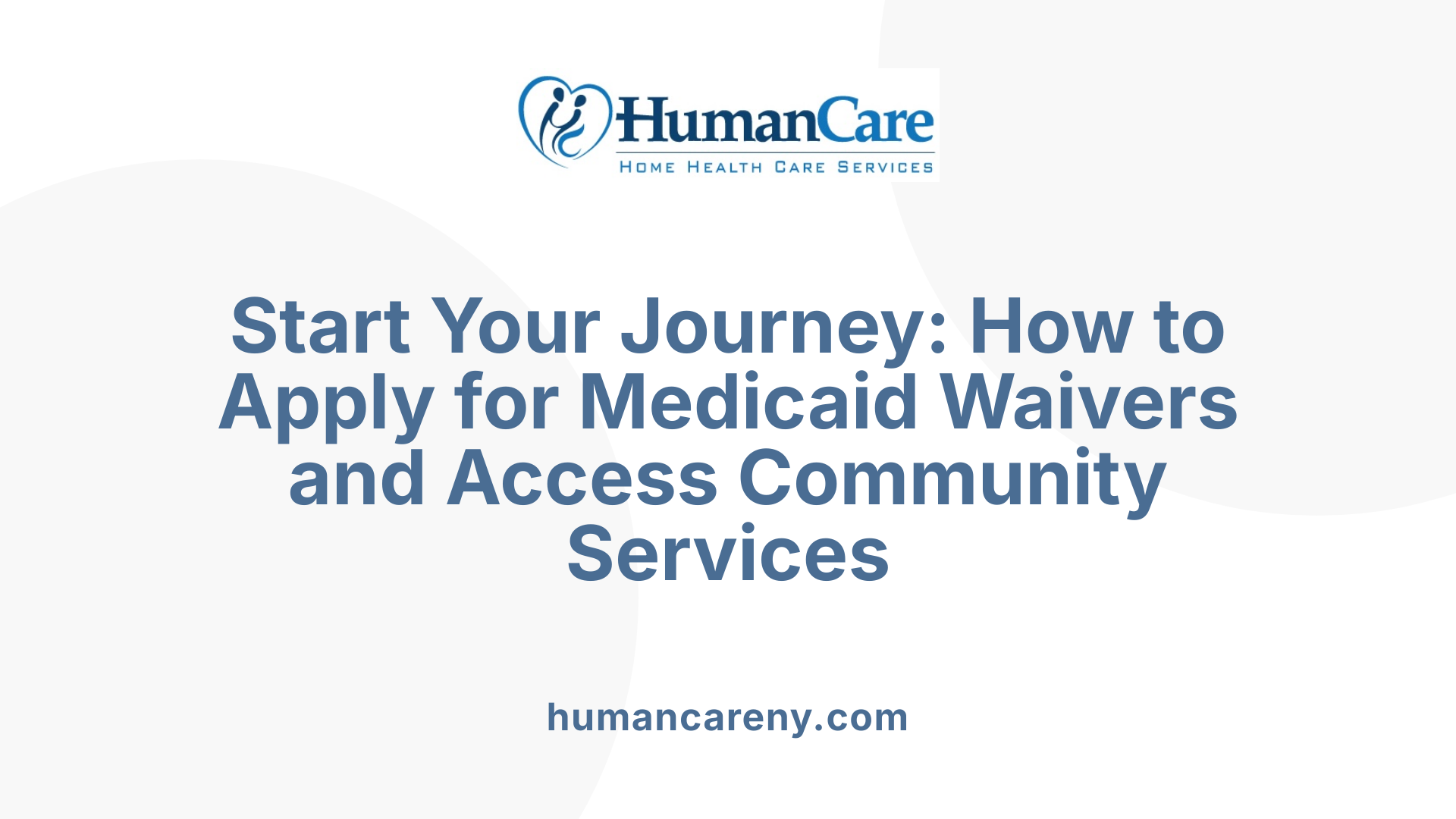
How can families apply for Medicaid waivers and access available services?
Families seeking Medicaid waivers, such as those supporting seniors and individuals with disabilities, can begin the process by reaching out to local state agencies responsible for Medicaid services. In most states, application procedures involve direct contact with Medicaid offices or designated waiver program administrators. For example, families can apply through local Department of Human Services or Behavioral Disabilities and Developmental Services offices.
The application process generally requires submitting detailed documentation to verify income, medical diagnoses, and specific needs. This documentation often includes proof of income, medical records, and diagnostic assessments performed by healthcare professionals.
Once applications are submitted, prospective participants typically undergo an evaluation to assess their level of care needs, ensuring they meet criteria similar to those required for nursing facility placement. This Level of Care (LOC) assessment determines the individual’s necessity for home and community-based services.
Eligibility can depend on several factors, including age, disability status, medical condition, and financial means. Each waiver program has specific eligibility criteria that must be reviewed carefully.
After approval, enrollment is managed by waiver program providers, often based on demand and capacity. Many programs have a designated waiting list due to limited resources.
It is important for families to understand that application procedures and eligibility standards can vary significantly across states and programs. Therefore, consulting the specific waiver program websites, contacting local offices, or seeking assistance from advocacy groups can be beneficial.
Documentation and assessments required
The most common required documents include proof of Medicaid status, medical diagnoses, and evidence of functional limitations. A comprehensive assessment or Level of Care evaluation is often necessary to establish the need for services that resemble institutional care.
In addition, some programs require families to provide detailed personal information, income verification documents, and proof of living arrangements.
State-specific forms and online portals are increasingly available to simplify the application process. For example, applicants might submit forms via state websites, mail, or in-person visits to local offices.
The assessment process typically involves a multidisciplinary team evaluating medical and functional needs to ensure alignment with program criteria.
Waiting lists and procedures for enrollment
Many Medicaid waiver programs do not have immediate openings due to limited resources. As a result, applicants may be placed on a waiting list.
Waiting times can vary from months to several years, depending on the program and state demand.
Applicants seeking to expedite their care can explore emergency diversion slots in some cases, especially if they face imminent institutional placement or health deterioration.
While waiting, families should consider other support programs, such as Supplemental Security Income (SSI), Social Security Disability Insurance (SSDI), or local community resources.
Some states offer periodic updates on their waiting list status and provide opportunities for families to maintain their place or update their applications.
In summary, the application process involves multiple steps, from initial contact and documentation submission to assessments and waiting periods. Staying informed and utilizing available advocacy resources can help families navigate this complex system.
Below is an overview table summarizing the application process:
Types of Medicaid Waivers and Covered Services
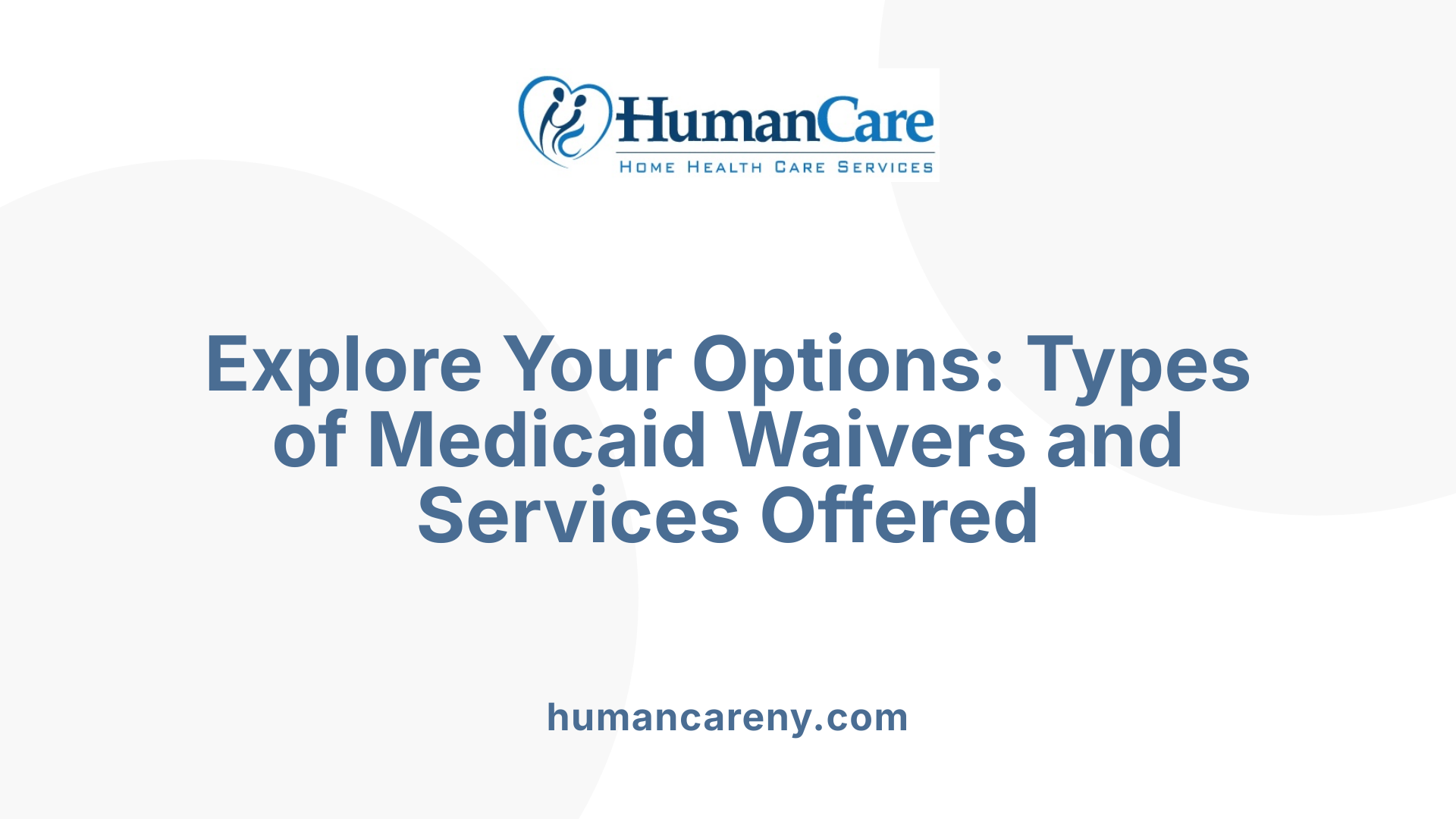
What types of Medicaid waivers exist, and what services do they cover?
Medicaid offers various types of waivers authorized under different sections of the Social Security Act, each designed to meet specific needs and preferences of individuals requiring long-term care and support. The most common are the 1915(c) waivers, which provide a broad range of home and community-based services (HCBS). These services include personal assistance, homemaker services, adult day programs, respite care, and habilitation support, giving individuals alternatives to residing in nursing homes or institutions.
In addition to the 1915(c) waivers, there are other specialized waivers. The 1915(i) waiver allows states to offer HCBS to individuals with incomes below 150% of the Federal Poverty Level (FPL), without the requirement of needing institutional care. This expands access for those who might otherwise not qualify for traditional Medicaid institutional services.
The 1915(j) waiver supports self-directed personal assistance services, empowering individuals to manage their own care and choose providers, fostering greater independence.
States also utilize the 1915(k) waiver to promote community integration by providing expanded day and employment services, housing, and other supports to help individuals live independently.
The 1115 demonstration waivers offer states the flexibility to test innovative Medicaid strategies, such as pilot programs or unique benefit packages that deviate from federal rules while still ensuring health coverage and cost-effectiveness.
Services covered under these waivers are tailored to meet diverse needs and include therapies, behavioral supports, environmental modifications like home improvements, specialized medical equipment, transportation, and housing assistance. For example, individuals with developmental disabilities might access supported employment or shared living services, while those with traumatic brain injuries may receive specialized medical supports.
The primary goal of all these waivers is to provide personalized, flexible care options, prevent unnecessary institutionalizations, and support individuals to live independently or with their families in their communities.
Common services offered across Medicaid waivers include:
| Service Type | Description | Typical Participants |
|---|---|---|
| Personal Care & Assistance | Help with activities of daily living (ADLs) like bathing, dressing, mobility | Elderly and disabled adults |
| Homemaker & Chore Services | Assistance with household tasks and home maintenance | Older adults, persons with disabilities |
| Adult Day Health | Supervised day programs providing health and social services | Seniors, adults with disabilities |
| Respite Care | Temporary relief for primary caregivers | Family caregivers of persons with disabilities |
| Therapies (Physical, Occupational, Speech) | Medical therapies to support functional skills | Individuals with injuries or disabilities |
| Environmental Modifications | Home upgrades for safety and accessibility | Elderly, disabled persons trying to age in place |
| Assistive Technology | Devices and systems that aid independence | Persons with sensory, mobility, or cognitive impairments |
| Transportation | Non-medical transportation to medical appointments | All waiver participants |
| Housing Support & Assistance | Support in finding or maintaining housing | Homeless or at-risk populations |
| Specialized Medical Equipment | Medical supplies and devices | Individuals with special health needs |
Description of Specialized Waivers for Particular Needs
| Waiver Type | Focus Area | Services Offered | Typical Participants |
|---|---|---|---|
| Developmental Disabilities Waivers | Developmental and Intellectual Disabilities | Supported employment, day habilitation, environmental modifications | Children and adults with DD, including autism |
| Traumatic Brain Injury (TBI) Waivers | Brain injuries requiring long-term support | Brain injury-specific therapies, community integration, supported living | Adults with traumatic brain injuries |
| Aged and Disabled (AD) Waiver | Elderly and Adults with Disabilities | Personal care, home modifications, adult day, behavioral supports | Older adults and disabled adults |
These various waivers and their covered services demonstrate the flexibility of Medicaid programs in supporting individuals to live independently and participate actively in their communities. Eligibility and specific services vary based on individual needs, diagnoses, and state-specific policies.
Overall, Medicaid waivers play a vital role in providing tailored, person-centered care that helps reduce reliance on institutional settings and promotes dignified, community-based living.
How do these waivers support individual needs?
The variety of available Medicaid waivers ensures that a wide spectrum of needs—from developmental disabilities and brain injuries to aging-related conditions—are met with appropriate, personalized services. They prioritize independence, safety, and community involvement, enhancing quality of life for millions of Americans.
Understanding the different types of waivers and their covered services enables families, caregivers, and advocates to better navigate the options available and advocate for appropriate support tailored to individual circumstances.
Financial Eligibility and Resource Limits
What are the general income and asset eligibility limits for Medicaid waivers?
Medicaid waivers are designed to support individuals with specific health, age, or disability needs. However, eligibility for these programs depends heavily on income and assets, with limits varying widely by state, program, and the individual's circumstances.
In most states, the income limit for long-term Medicaid coverage, which includes many waiver programs, is approximately $2,901 per month for singles in 2025. This threshold ensures that only those with limited income can access services supportive of their care needs. Asset limits generally hover around $2,000 for individuals; however, some states set higher thresholds or do not impose asset limits at all. For example, California offers no asset limits for certain Medicaid programs, providing greater flexibility for applicants.
When it comes to Medicaid eligibility based on Modified Adjusted Gross Income (MAGI), the income thresholds tend to be higher. Non-MAGI groups, which include many elderly and disabled individuals, often have income limits around $1,800 per month for singles, along with resource limits near $32,396 in 2025. These limits help ensure that services are directed to those with the most need.
Spousal protections are also a critical component of Medicaid eligibility. Many states allow the non-applicant spouse—referred to as the community spouse—to retain substantial assets. The federal government sets a benchmark, permitting up to $157,920 in assets to be kept by the community spouse, preventing impoverishment during the Medicaid eligibility process.
It’s important to note that these thresholds are not uniform across all states or programs. Some states might have higher income or asset limits, or offer specific waivers that allow for exceptions based on individual needs. For example, certain waiver programs for children or individuals with developmental disabilities may have different criteria, often with higher asset limits to accommodate family resources.
Understanding these variations can be complex, and eligibility often involves detailed financial documentation and assessments. Families interested in applying for Medicaid waivers should consult their state’s specific guidelines or speak with eligibility specialists to determine current thresholds.
Here is a summary table highlighting typical income and asset limits:
| Program Type | Income Limit (Monthly for Singles) | Asset Limit | Notable Protections or Exceptions |
|---|---|---|---|
| Long-term Care Medicaid | $2,901 (2025) | $2,000 (generally) | Spousal asset protections up to $157,920 |
| MAGI-based programs | ~$1,800 | ~$32,396 | Varies by state; some offers higher limits |
| No asset limit programs | Varies | No set limit | Often for specific populations or conditions |
These figures serve as general guidelines. Always verify with local Medicaid offices or specific program documentation for the most accurate and current information. Applying for a waiver involves demonstrating income and assets meet these thresholds, with flexibility sometimes available for certain life circumstances or program-specific allowances.
For more detailed information, individuals and families should search “Medicaid waiver eligibility income and asset limits” to access state-specific resources, forms, and guidance tailored to their location and needs.
Support and Advocacy Resources for Families
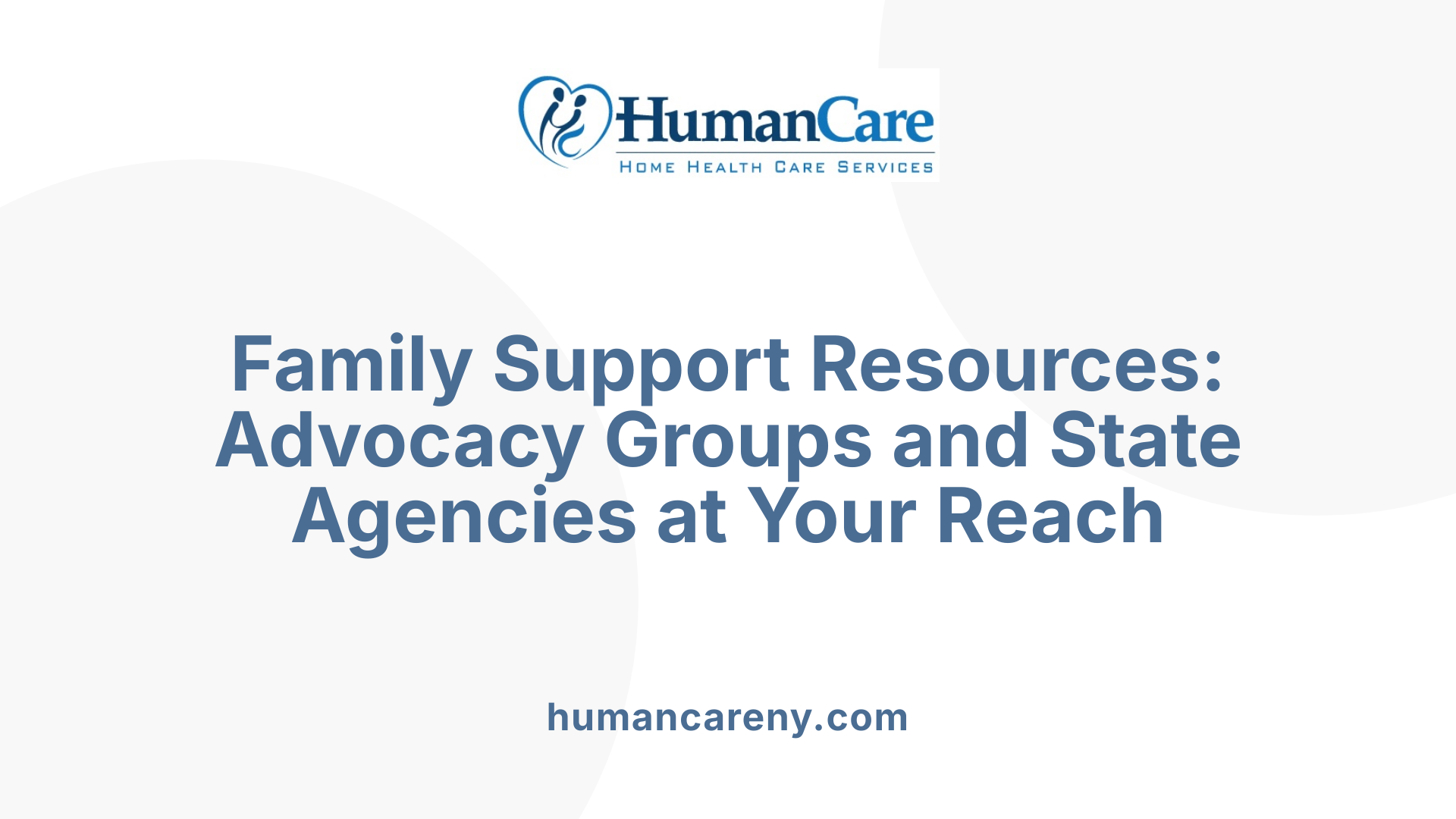
Are there resources or advocacy organizations to help families navigate Medicaid waiver options?
Yes, there are many organizations dedicated to assisting families in understanding and accessing Medicaid waiver programs. These groups serve as valuable guides through the complex application procedures, eligibility requirements, and available services.
One prominent example is Parent to Parent organizations, such as Parent to Parent of New York State. These groups provide families with essential information, referrals, and personalized guidance on Medicaid Home and Community-Based Services (HCBS) waivers. They help families navigate the eligibility criteria, explain the types of services available (like personal care, supportive housing, or assistive technology), and assist in contacting local offices for application support.
In addition to family support organizations, state agencies also play a crucial role. Agencies like the Office for People With Developmental Disabilities (OPWDD) and the Department of Health offer comprehensive resources, updated FAQs, detailed guides, and direct contacts for families seeking assistance.
Many advocacy groups also work together to promote awareness and improve access. For example, organizations such as Disability Rights groups advocate for policy changes and provide legal support for families facing challenges in accessing services.
Summarized below are some organizations and resources available to families:
| Organization/Agency | Services Offered | Target Population | Contact Method |
|---|---|---|---|
| Parent to Parent (State-specific) | Information, referrals, guidance | Families of children and adults with disabilities | Phone, email, local meetings |
| Office for People With Developmental Disabilities | Policy info, updates, application guidance | Individuals and families with developmental disabilities | Website, contact centers |
| Disability Rights Organizations | Legal support, advocacy, policy change | All persons with disabilities | Legal clinics, helplines |
| State Departments (e.g., Department of Health) | General information, official guidelines | General public, families | Website, telephone |
These resources empower families by providing knowledge, advocating for stronger supports, and streamlining the process of securing services through Medicaid waivers.
Concluding Notes
Navigating Medicaid waiver options can be complicated, but families are not alone. Support organizations, advocacy groups, and state agencies are essential allies. They help ensure that individuals with disabilities and their families receive the services they need to live independently and participate fully in their communities.
For those seeking further information, a simple online search with the query "Resources and advocacy for Medicaid waiver families" often yields helpful, updated results tailored to specific regions or needs, making these services more accessible.
Policies, Regulations, and Family Support Strategies
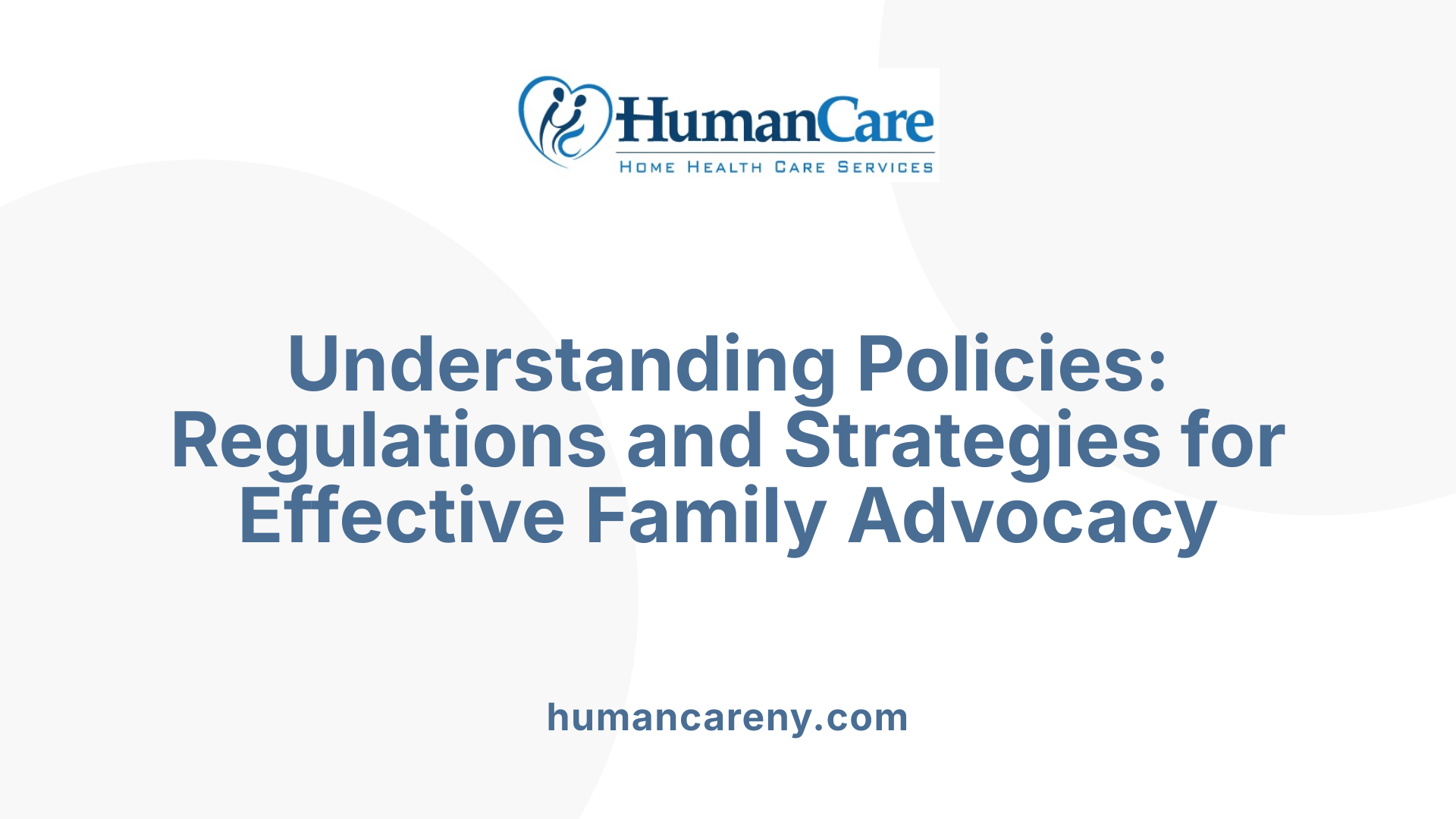
What are the policies and regulations governing Medicaid waivers?
Medicaid waivers operate within a complex framework of federal and state laws designed to ensure they serve beneficiaries effectively and safely. At the federal level, the Centers for Medicare and Medicaid Services (CMS) establishes broad guidelines that all state waivers must follow. These include standards for maintaining service quality, ensuring individual rights, and controlling costs.
States develop their own HCBS (Home and Community-Based Services) Waivers within these federal parameters. For instance, Illinois, Indiana, and Maryland have tailored programs that meet the specific needs of their residents, such as the Aged and Disabled (AD) Waivers and Developmental Disabilities Waivers. These state programs set detailed eligibility criteria, including medical requirements, age, and financial factors.
Key regulatory components include provider standards, conflict-free case management rules, and adherence to the 2014 HCBS Final Rule, which emphasizes person-centered planning and community integration. States can request federal waivers to modify or waive certain Medicaid requirements, like income limits or service capacity standards, to expand access to services or tailor offerings. Their goal is to foster community living, ensure safety, and provide flexible, person-directed support.
Overall, Medicaid waiver policies seek to balance individual customization with compliance to federal safety and quality standards, promoting person-centered care that respects dignity and independence.
How does person-centered planning influence quality standards?
Person-centered planning is essential in creating effective waiver services. It ensures that individuals' preferences, needs, and goals are at the heart of service planning. This approach requires providers and case managers to collaborate closely with beneficiaries and their families to develop customized support plans.
Service coordinators, or case managers, facilitate this process by advocating for the individual's choices, identifying the most suitable services, and adjusting plans as needs evolve. This focus on the individual’s voice aligns with federal mandates, especially the 2014 HCBS Final Rule, which emphasizes that care must be respectful, individualized, and community-based.
Quality standards derived from person-centered planning include respect for dignity, choice, independence, and integration into the community. Providers must follow regulations to ensure services are delivered in settings that promote personal autonomy, safety, and social participation.
How can families advocate within the system?
Families play a vital role in navigating and improving Medicaid waiver programs. Advocacy begins with understanding the eligibility criteria, application procedures, and available services. Families can seek support from advocacy organizations such as Indiana Family to Family, Arc of Indiana, and Maryland’s Disability Rights. These groups provide information, resources, and assistance in applying for waivers.
To advocate effectively, families should stay engaged throughout the process, from submitting applications to attending planning meetings and appealing denials if necessary. Maintaining updated contact information, documenting needs and preferences, and participating in reviews are ways to influence service delivery.
Additionally, families can participate in public comment periods for policy updates, join advisory committees, and collaborate with providers to ensure services align with individual goals. Many states also offer ombudsman services specifically for supporting families and individuals, helping them resolve issues and voice concerns about their care.
Summarizing Medicaid Waiver Regulations and Family Involvement
Medicaid waivers are guided by strict federal standards combined with state-specific regulations. These policies aim to optimize community-based services, prioritize individual choice, and uphold safety and quality. Person-centered planning is central to delivering meaningful, tailored support.
Families are encouraged to actively participate in the system by advocating for their loved ones, utilizing available resources, and engaging with policy processes. Through collaborative efforts, they can help shape a responsive, respectful, and effective home and community-based care system.
Navigating Support Resources and Making Contact
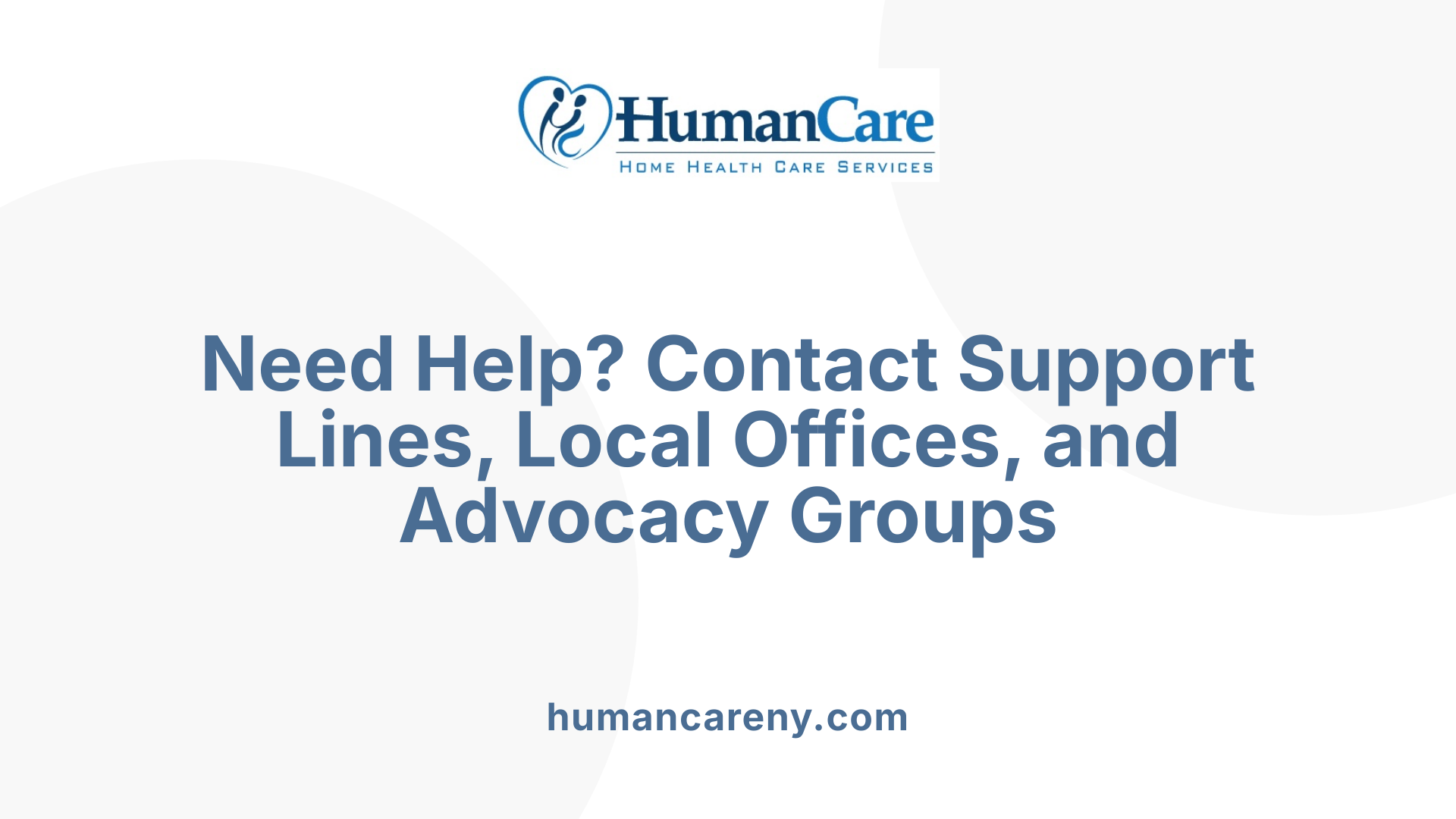
How can families contact support resources for Medicaid waiver assistance?
Families seeking support resources for Medicaid waiver assistance have several pathways to get the help they need. The first step typically involves reaching out to the state Medicaid agency, which serves as the primary point of contact for information about available programs, application procedures, and eligibility requirements.
Each state has its own systems and contact points. For example, in Kentucky, families can apply online through the kynect portal, which offers a centralized platform for Medicaid services. They can also call the help line at (855) 306-8959 for personalized guidance or visit their local Department for Community Based Services (DCBS) offices for in-person assistance.
Specific waiver programs often have dedicated contacts within their state departments. For example, the Medicaid Home and Community-Based Services (HCBS) Waivers like the Family Supports Waiver or the Developmental Disabilities Waiver are managed by state agencies such as the Department of Behavioral Health and Developmental Disabilities. These agencies can be contacted via email, phone, or through their official websites for detailed information, application guidance, and support.
In addition to direct government contacts, many states partner with regional service providers, local advocacy organizations, and special programs to broaden access. Georgia, for example, offers services through the Adult Day Health Care (ADHC) and Supports Waivers, with contact details available on their official state health or disability services websites.
Advocacy groups also play a vital role. Organizations such as the Arc of Indiana, Indiana Family to Family, or similar groups in other states can provide valuable assistance, resources, and even help navigate the application process. They often have helplines, informational sessions, and support networks.
Ultimately, the most straightforward way for families to access Medicaid waiver information and support is to contact their state Medicaid office directly or reach out to program-specific support lines. These contacts are equipped with the latest program details, application steps, and can connect families with local offices or advocates who can provide ongoing assistance.
Support lines, local offices, advocacy groups
- Support Lines: State Medicaid helplines or dedicated program numbers, such as Kentucky’s kynect help line or similar services in other states.
- Local Offices: Regional offices like the Department of Behavioral Health and Developmental Disabilities or state health departments.
- Advocacy Organizations: Nonprofits and advocacy groups such as Indiana’s Arc of Indiana or Georgia’s advocacy networks.
Connecting through these routes enables families to receive tailored, up-to-date support and understand the full range of available resources for Medicaid waiver services, ensuring their loved ones receive necessary support within their communities.
Empowering Families Through Knowledge and Advocacy
Navigating Medicaid waiver programs can seem complex, but with a clear understanding of available services, eligibility requirements, application processes, and support resources, families can become strong advocates for their loved ones. Success often depends on proactive engagement, utilizing advocacy organizations, engaging with local agencies, and staying informed of policy updates. By empowering themselves with knowledge and building supportive networks, families can access the comprehensive, personalized care needed to improve quality of life and foster independence for loved ones with disabilities or aging needs. Continued advocacy and collaboration will ensure these programs evolve to better serve families and individuals, creating a more inclusive, supportive community landscape.
References
- Services on the Aged and Disabled Waiver - DHHS
- ADvantage Waiver - Oklahoma.gov
- Indiana's Medicaid Waiver Programs: Home and Community-Based ...
- Indiana - Kids' Waivers
- Developmental Disabilities Supports Division
- Eligibility for Medicaid HCBS Waiver Services - DHHS - Nebraska.gov
- Home and Community Based Services (HCBS) Waivers



